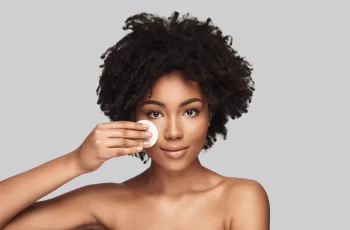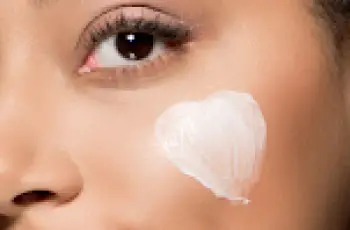
Can You Use Vitamin E with Hyaluronic Acid?
Hyaluronic acid and vitamin E are highly effective skincare ingredients that result in a number of benefits. When it comes to teaming ingredients together it is often considered some are a recipe for the disaster while others are made for each other, hyaluronic acid, and vitamin E fall into the latter. So, with this in mind, let’s explore together how you can use vitamin E with hyaluronic acid.
Before we dive in however, let’s quickly refresh our memories about these two effective ingredients and how they work on the skin.
What are the skin benefits of hyaluronic acid?
Renowned for its unique ability to retain water and lock moisture into the skin.
One molecule of hyaluronic acid is able to hold up to 1,000 times its own weight in water.
Ensures the natural protective skin barrier is fully functioning and able to combat any free radicals or other environmental aggressors.
Reduces the appearance of fine lines and wrinkles giving the skin a smoother and plumper finish to the complexion.
Combats signs of fatigue on the skin giving it a boost in hydration and leaving it looking fresh and vibrant.
Helps to tighten the skin making the signs of pores become less noticeable.
Ensures the skin is fully hydrated and able to absorb any skincare products applied to reach the lower areas of the skin.
Leaves the skin feeling softer and smoother ensuring any makeup applied with last longer and apply easier.
What are the skin benefits of vitamin E?
Packed with antioxidants it can combat any signs of free radicals and other environmental aggressors.
Helps reduce the appearance of UV damage, such as dark spots, hyperpigmentation, and uneven skin tone.
Provides nourishment to the surface of the skin keeping it plumped and healthy.
Highly moisturising and can help combat areas of severe dryness of the skin, from elbows to cuticles.
Can absorb rapidly into the skin leaving it hydrated and able to absorb any other skincare products applied to the face.
Can be taken as a supplement or through a topical skincare product, such as a cream or serum.
Reduces the appearance of scars and wounds as well as preventing any new ones developing.
Can you use vitamin E with hyaluronic acid?
You can indeed, both skincare ingredients are able to work together with little to no side effects. With the humectant traits of hyaluronic acid keeping the skin barrier plumped and hydrated, vitamin E can nourish the skin keeping in moisturised and balanced at its healthiest state.
How you decide to layer them depends on the product formulations as its always considered best to apply products from thinnest to thickest consistency. Starting off with face cleansers, toners, serums, face oils and moisturisers. This is a basic skincare rule when layering products in your routine. This ensures you are allowing the products to absorb properly into the skin without having to compete with physical barrier left behind by thicker skincare products.
What works best with hyaluronic acid?
The beauty of hyaluronic acid is the fact it can deliver impressive skin results single handily as well as when teamed with other potent skin ingredients. It is one of the very few skincare powerhouses, such as lactic acid, niacinamide, retinol and vitamin C that can work well with other formulations and ingredients. Just like all skincare ingredients, I would suggest performing a patch test for 24 hours before applying the product all over the face in case there is some unwanted irritation or allergic reaction.
To get the most out of your hyaluronic acid there are various molecular sizes that are found in different formulations meaning they can reach the lower layers of the skin. With the humectant abilities of hyaluronic acid, it will continue to draw up water from the lower layers of the skin and bring the hydration to the surface. This will keep the complexion plumped and hydrated, but what you may find is the skin may be left feeling “thirstier” especially if you have applied hyaluronic acid to dry skin. Therefore, I suggest ensuring the skin is still slightly damp as this will enable the hyaluronic acid to lock in every ounce of hydration into place and prevent the moisture escaping.
Can you mix hyaluronic acid with vitamin C and E?
Yes, you certainly can use hyaluronic acid with vitamin C and E. Including all three in your routine will help you reap the rewards of these potent powerhouses. With this combination you will be left a vibrant complexion whilst combating signs of ageing, such as fine lines and wrinkles. With the help from the antioxidant properties of both vitamin C and E any signs of discolouration, such as dark spots or post acne scarring are significantly reduced. The skin barrier is also left strengthened and able to protect itself from any exposure to free radicals, such UV rays, pollution, and harsh climates.
The best way of mixing hyaluronic acid, vitamin C and E is to start the day with a serum enriched in vitamin C followed with hyaluronic acid to lock in hydration. Follow this in the evening with a hyaluronic acid serum followed with a moisturiser packed with vitamin E to nourish and repair the skin whilst you catch up on your well-deserved beauty sleep.
Should I use hyaluronic acid before or after retinol?
It’s best to apply hyaluronic acid after retinol to help counteract the drying effects of retinol. Leave around 30 minutes between applications to ensure each product is fully absorbed into the skin, ideally you should use a retinol enriched serum followed with a moisturiser packed with hyaluronic acid. This will not only lock moisture into the skin, but the physical barrier created by the moisturiser will give the skin an extra layer of protection from the elements, free radicals, and other harsh environmental aggressors. If you want to find out more about how to layer hyaluronic acid and retinol, check out our dedicated blog post.
Don’t forget to follow us on Instagram for more skincare experts, new launches, and exclusive discount codes.


